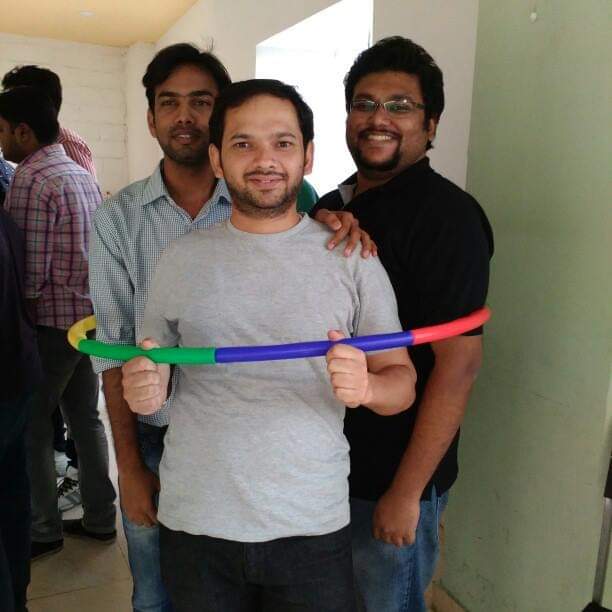Deep Dive into Google Lighthouse: Elevating Web Experiences
 Abhay
Abhay
The digital realm is undergoing rapid transformations, and in this dynamic environment, the significance of tools that enhance web experiences cannot be understated. Google Lighthouse emerges as a beacon in this landscape. Designed and launched by Google Lighthouse, it is an automated tool crafted to improve the quality of web pages.
But what sets Lighthouse apart? It’s not merely a tool but a comprehensive solution that evaluates various parameters of web pages. From performance metrics to best practices for progressive web apps, Lighthouse scrutinizes all. The tool operates in the user’s environment, ensuring real-world conditions are simulated while testing. This aids in providing genuine, actionable insights rather than mere theoretical data.
Moreover, its integration capabilities with other developer tools offer a seamless experience, making it an indispensable asset in the toolkit of developers, testers, and digital enterprises.
In essence, Google Lighthouse doesn’t just identify the problems; it offers insights and solutions to optimize web applications, ensuring they are fast, accessible, and user-friendly. As we delve deeper into its applications and benefits, one can truly grasp the transformative power Lighthouse brings to web development and testing.
The Benefits of Google Lighthouse
In today’s fast-paced digital landscape, Google Lighthouse has become an indispensable tool for developers, testers, and digital businesses. Its rise in popularity is attributed to the myriad benefits it offers. Delving deeper, we uncover the significant advantages of integrating Google Lighthouse into the web development and testing process:
Comprehensive Analysis: Beyond merely highlighting issues, Lighthouse offers a holistic review of web pages. This analysis spans performance metrics, accessibility evaluations, SEO effectiveness, and progressive web app assessments. Its detailed reports equip developers with actionable insights, making optimization more targeted and effective.
Remote Debugging for Android Devices: Debugging can be a challenging endeavour, especially when working with various devices with different OS, screen sizes, and resolutions. Lighthouse offers a comprehensive solution to this. With its remote debugging feature, developers can seamlessly remote debug Android devices with Google Lighthouse, identifying and rectifying performance bottlenecks, JavaScript errors, or rendering issues in real time. This ensures a consistent application experience across different Android devices and significantly reduces the turnaround time for debugging.
Open-source Flexibility: The open-source nature of Lighthouse means it benefits from the collective intelligence of a global community of developers. As web standards and best practices evolve, Lighthouse remains updated and relevant, ensuring that users always have access to cutting-edge testing tools.
User Experience Focus: Lighthouse’s primary goal is to improve the end-user’s experience. Whether it’s ensuring faster load times, smoother interactions, or more accessible web elements, Lighthouse guides every facet that can enhance user satisfaction.
Incorporating Google Lighthouse into the testing regimen not only streamlines the evaluation process but also ensures that web pages and applications align with the best practices of today’s digital standards.
The Synergy of Automation Testing Tools and Lighthouse
With its comprehensive diagnostics suite, Lighthouse offers developers valuable insights about the performance, accessibility, and overall health of their web applications. But when these capabilities are paired with automation testing tools, the outcomes can be transformative for the testing process.
Consistency and Repeatability: Automation testing tools can schedule regular Lighthouse audits, ensuring that web applications consistently meet the desired benchmarks. Regular checks lead to the early detection of issues, making it easier to address them before they escalate.
Scalability: For large-scale web applications or websites with numerous pages, manually running Lighthouse audits for each page would be time-consuming and inefficient. Automation tools can effortlessly scale to conduct audits across various web pages, making the process more efficient.
Integration into CI/CD Pipelines: Lighthouse can seamlessly integrate into Continuous Integration and Continuous Deployment (CI/CD) pipelines with automation tools. This ensures that performance and accessibility checks become intrinsic to the development and deployment process.
By intertwining Lighthouse’s capabilities with the power of automation testing tools, teams can ensure a more proactive, efficient, and holistic approach to web application quality assurance.
Maximizing the Power of Lighthouse: Tips for Optimal Use
While inherently powerful, the Lighthouse can offer even more profound insights when utilized to its full potential. Here are some strategies to use Lighthouse more effectively:
Regular Updates: Lighthouse is a dynamic tool that undergoes frequent enhancements. Ensure you always use the latest version to benefit from new audits, refined algorithms, and enhanced reporting capabilities.
Tailor Your Audits: Lighthouse provides many audits, but not everyone may be pertinent to your application. Customize the audit configuration to focus on areas most relevant to your web page or application. This targeted approach ensures that you’re not overwhelmed with unnecessary data.
Mobile-first Testing: Given the surge in mobile web traffic, it’s essential to prioritize mobile testing. Lighthouse offers tools specific to mobile web testing to emulate real-world conditions. Ensure to leverage this feature, especially when aiming for optimal mobile responsiveness.
Integrate with CI/CD: Integrating Lighthouse into your CI/CD pipeline can help automate the testing process. This ensures that performance regressions or other issues are flagged promptly as new code is pushed.
Deep-dive into Documentation: Google provides extensive documentation for Lighthouse, which includes best practices, explanations of metrics, and more. Familiarizing yourself with this documentation can provide a richer context for audit results.
Leverage Third-Party Platforms: While Lighthouse provides a wealth of data, synthesizing this information into actionable insights can be challenging. Platforms like HeadSpin offer an integrated view, combining Lighthouse’s raw data with their analytics to provide a more comprehensive understanding of performance and areas of improvement.
Benchmark and Compare: Periodically, save and compare Lighthouse reports to monitor progress over time. This practice helps understand the impact of optimizations and guides future development efforts.
By harnessing these strategies, users can ensure that they are not just scratching the surface of what Lighthouse has to offer but delving deep into its capabilities to ensure truly top-notch web applications.
Using Lighthouse With HeadSpin
Combining HeadSpin and Lighthouse on remote Android devices streamlines debugging. HeadSpin’s robust infrastructure offers comprehensive testing across real-world scenarios. Integrated with Lighthouse, it provides insights into performance, accessibility, SEO, and best practices. This aids remote debugging by granting access to Android devices from various locations, while Lighthouse’s audits offer actionable recommendations. The union also enables real-time user experience monitoring, capturing interactions and performance data. Together, they create a powerful toolkit for effective Android debugging.
Conclusion
As web applications continue to form the bedrock of modern businesses, the role of comprehensive testing tools like Lighthouse cannot be overstated. Its robust features and comprehensive audits offer a holistic approach to web application testing.
For those looking further to amplify their testing game, platforms like HeadSpin bring additional features and integrations that make the process more seamless, efficient, and effective. Remember, in digital experiences, quality is not just a luxury – it’s a necessity.
Article resource: This article was originally published on https://phelixinfosolutions.com/blog/deep-dive-into-google-lighthouse-elevating-web-experiences/
Subscribe to my newsletter
Read articles from Abhay directly inside your inbox. Subscribe to the newsletter, and don't miss out.
Written by

Abhay
Abhay
I am a digital marketer with 13+ yrs. experience. I have written so many blogs and also have sound knowledge in software testing.